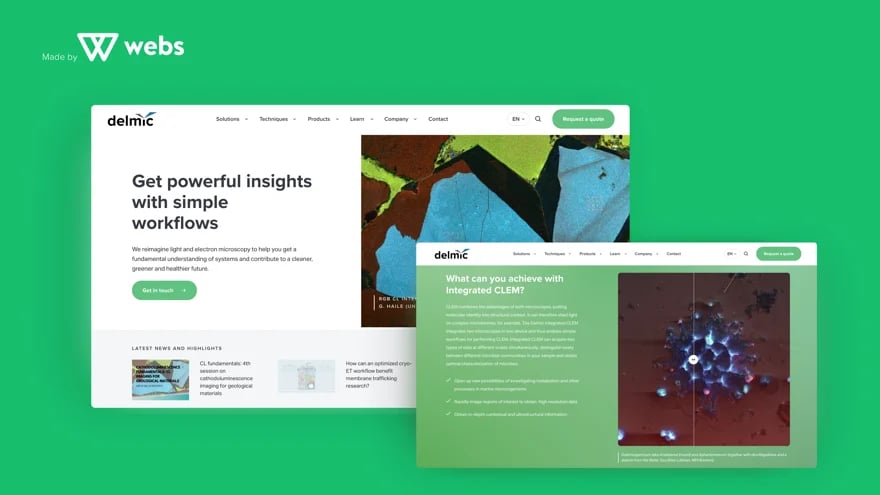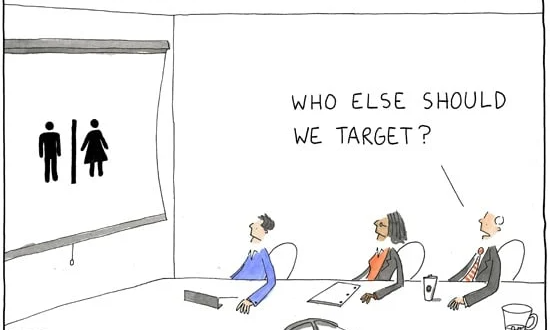HubSpot is a modern all-in-one solution with which you map and optimize the customer journey. You collect all the data from your (potential) customers in one place, and easily gain insight into the important touch points. In HubSpot, you can set up various buyer journeys that
are activated based on the behavior of your customers and prospects. By linking relevant content to this behavior and setting up nurture flows, leads are guided through their buying journey.
A real-world example: Imagine a visitor to your website fills out a calculator for financing. Based on the results, you can send him additional information about loans. If it appears that he is interested, you can invite him for an informative meeting in which the possibilities are explained on the basis of his personal situation.
Providing the right information at the right time is also referred to as lead nurturing.
Because Hubspot allows you to measure the behavior of your visitors, it is easy to see whether optimizing the customer journey by means of lead nurturing leads to the desired result.
Customer journey mapping: make a difference during the customer journey
Google "customer journey" and you'll get more than 816 million search results. Interest in customer journeys has skyrocketed. That's because decision-making in the B2B market has changed dramatically in recent years. Do you have a question or are you looking for a solution? Then the Internet is the way to go. More than 70% of search takes place online. If you succeed in being visible at the right moment - with the best information - in that search, you ensure that customers come to you, instead of the other way around. And that is exactly why we want to understand the customer journey.
What is the customer journey?
Let's start at the beginning: the "customer journey" literally means customer journey. This term is more comprehensive than it suggests, because the customer journey starts well before the first purchase is made. Here's the thing: a customer journey usually begins with a problem. A problem that affects the customer (consciously or unconsciously) and for which they are looking for a solution. This search goes through several stages, and usually ends by investing in a solution. Subsequently, service and aftercare are also part of the customer journey.
Organizations that positively influence the customer throughout the customer journey, that is, from the first contact moment to aftercare, have more satisfied customers. And satisfied customers are repeat customers, exactly why the customer journey is increasingly becoming part of the strategy.
The eight phases of the Cyclonic Buyer Journey model
From right to left, bottom to top and back again: the customer journey is often quite chaotic. At Webs, we use the eight stages of the Cyclonic Buyer Journey model, but unlike what you might expect (and than we write it down), a customer journey is not chronological.
A lead 's situation is constantly changing. So do his interests and the sources of information he consults. Some customers research multiple times, others skip a stage and suddenly request a call because the urgency of a problem increases.
The eight stages a customer goes through (in dynamic order):
1. Pre-awareness
As the name implies, in this phase the customer is not yet aware of a problem. He experiences bothersome symptoms, but they are latent. An incentive is needed to make the problem manifest and spark interest in a solution. Content is an effective tool here, especially when you capitalize on emotion.
2. Awareness
In the awareness phase, the lead is more aware of the problem, and knows that sooner or later a solution must be found. In this phase the first search questions are asked: online or in the network. The lead does not yet feel urgency and is not yet very actively searching.
3. Education
In the third phase of the journey, the search for a solution intensifies. The lead is looking for a way to overcome its challenges and is willing to make an investment. The first scenarios are worked out and solutions are listed.
4. Consideration
The moment of choice is approaching, in this phase various solutions are compared. This is an important phase for providers, at this time you can really help potential customers in their decision making with qualitative content. Why is your solution cheaper, easier or better than others?
5. Evaluation
The first real contact moment takes place: the lead needs a conversation with sales, so they can present the unique context of their organization and ask specific questions. The research deepens, figuring out what the solution will cost (time, money and other resources) and exactly what it will deliver.
6. Rationalization
If it turns out that your solution is interesting enough for the customer, then additional questions come into play. How is the service? Are the terms and conditions favorable? Sales plays an important role here to remove the main hurdles.
7. Decision
The moment of truth, the lead makes a choice. Perhaps there are several other providers in the race, so in this phase you emphasize what makes your product unique. If your offer is distinctive, you also end up having more room to negotiate good terms.
8. Ongoing delivery
This is where the search ends, but not the customer journey: even after the purchase, you ensure a good customer journey and try to meet or exceed expectations. Satisfied customers often buy more products or services. Moreover, they are your best ambassadors, an opportunity to also show other companies that you have solved their problems.

Why customer journeys are booming in the B2B market
Google "customer journey" and you'll get more than 816 million search results. Interest in customer journeys has skyrocketed. That's because decision-making in the B2B market has changed dramatically in recent years. Over 70% of the buying process today takes place online. As a result, the role of marketing has evolved. The traditional push strategy has given way to a pull strategy. That is, the focus is no longer on the offer, but on customer demand. Newfangled marketing is all about understanding the customer's needs so that you can offer more targeted valuable information. Information that helps the customer make a good choice. And this is where customer journey mapping becomes relevant: using this method, you make the journey of your customer(persona) transparent, so you can create content that matches it.
How to make a difference with customer journey mapping in 5 steps
For many companies, customer journey mapping is quite a challenge, because customer journey is not a linear process: each customer is unique, creating a complex sum of different experiences. And yet despite the differences, there are also many similarities. Like the questions that arise during this process. Those who know how to respond intelligently can make the difference for the customer.
Step 1: Make a rough estimate of the customer journey
The first impression is often created online. Your website is therefore an important link, visited by different target groups (personas) who are all in a different phase of the customer journey. How do you make sure you are relevant to all these people? That's the challenge many companies face.
The first step is to map out the eight phases of the customer journey, for your key personas. In doing so, ask yourself the following questions:
- What would the customer journey look like in the real world (offline)?
- What process do customers go through from the first moment of contact to the purchase decision?
- How do I respond to what a customer does, thinks and feels at each stage of the purchase journey?
Step 2: Determine the customer's information needs.
Each stage of the customer journey raises different questions. Map out what information needs a customer has so you can answer them with your content. Also, the objective in each phase is different, in the beginning of the customer journey you "only" want to help, and the closer you get to the purchase decision, the more important it is to also convince and improve the user experience.
To find out these information needs, you can ask yourself:
- What searches do potential customers perform? For example, through Google and on your website?
- What are the most frequently asked questions about your offer? For example, questions asked to the sales team via social media, the website, email or over the phone?
- What conversations do account managers and product experts have at trade shows, demonstrations and with customers?
Step 3: Map the touchpoints
What are the moments when you can really make a difference for your customer? And how can you best reach your customer then? The right moment and the right channel, those are the keywords during this step. A classic moment is before delivery, when you want to inform the customer about the exact time with a track & trace code. Or during delivery, for example because you want to share an unboxing video.
Among the questions you ask here are:
- Through which channels can you best reach the target group (don't forget offline here)?
- Which touchpoints are crucial in the customer's purchase journey?
- On which touchpoints does your organization already score well and where is there room for improvement?
Step 4: Start mapping
Mix the information from steps 1, 2 and 3 é voila: you have insight into where you can add extra value during the customer journey.
Ask yourself the following questions:
- When is the information need not being met adequately and why?
- Are there other obstacles in the customer journey? For example, consider a form on the website that is completed very infrequently because it is too complicated.
Step 5: Improve the purchase journey
The final step is to define actions to improve the customer journey based on the analysis from step 4. For example, creating new content, optimizing existing content or simplifying (for example) that complicated form on your website. This is an ongoing process. Usually there are multiple customer journeys, for example for different personas or for different products. In that case, you repeat the above roadmap several times.
Understanding your customer journey with HubSpot

Want to get the most out of HubSpot? Subscribe to our newsletter, follow us on LinkedIn, or attend our HubSpot User Days!
Explore HubSpot User DaysShare this
You May Also Like
These Related Stories

Buyer journey: visualize phases of customer journey

Redesign of the customer journey drives higher engagement/conversion

